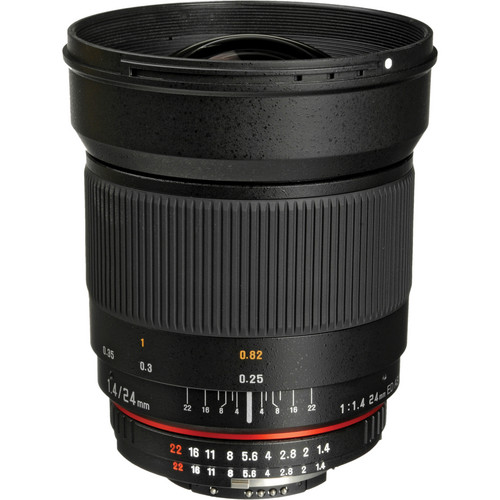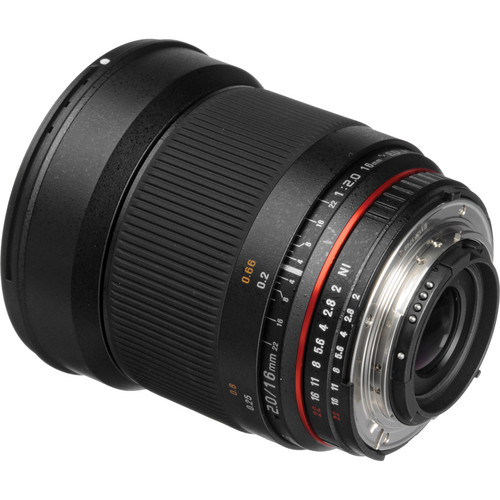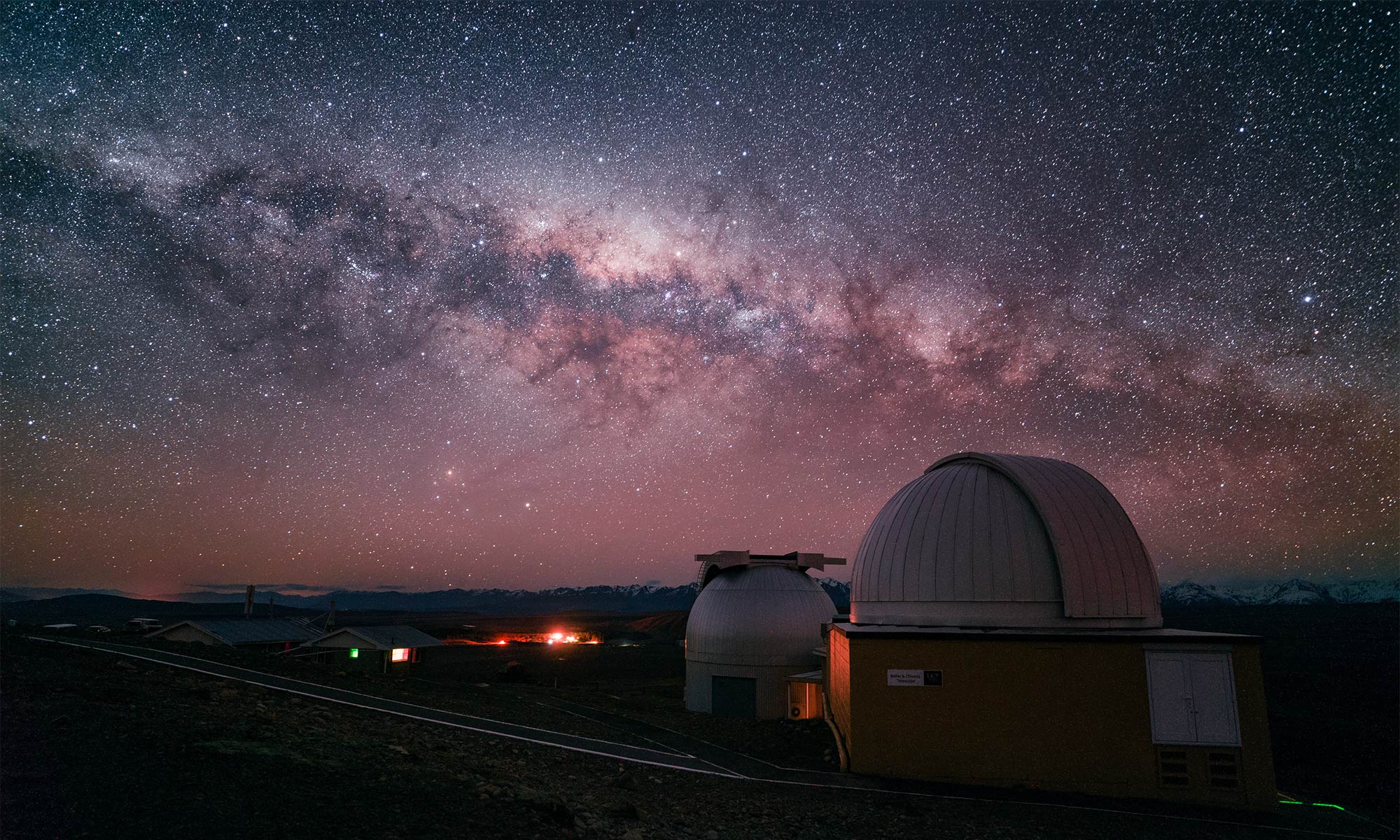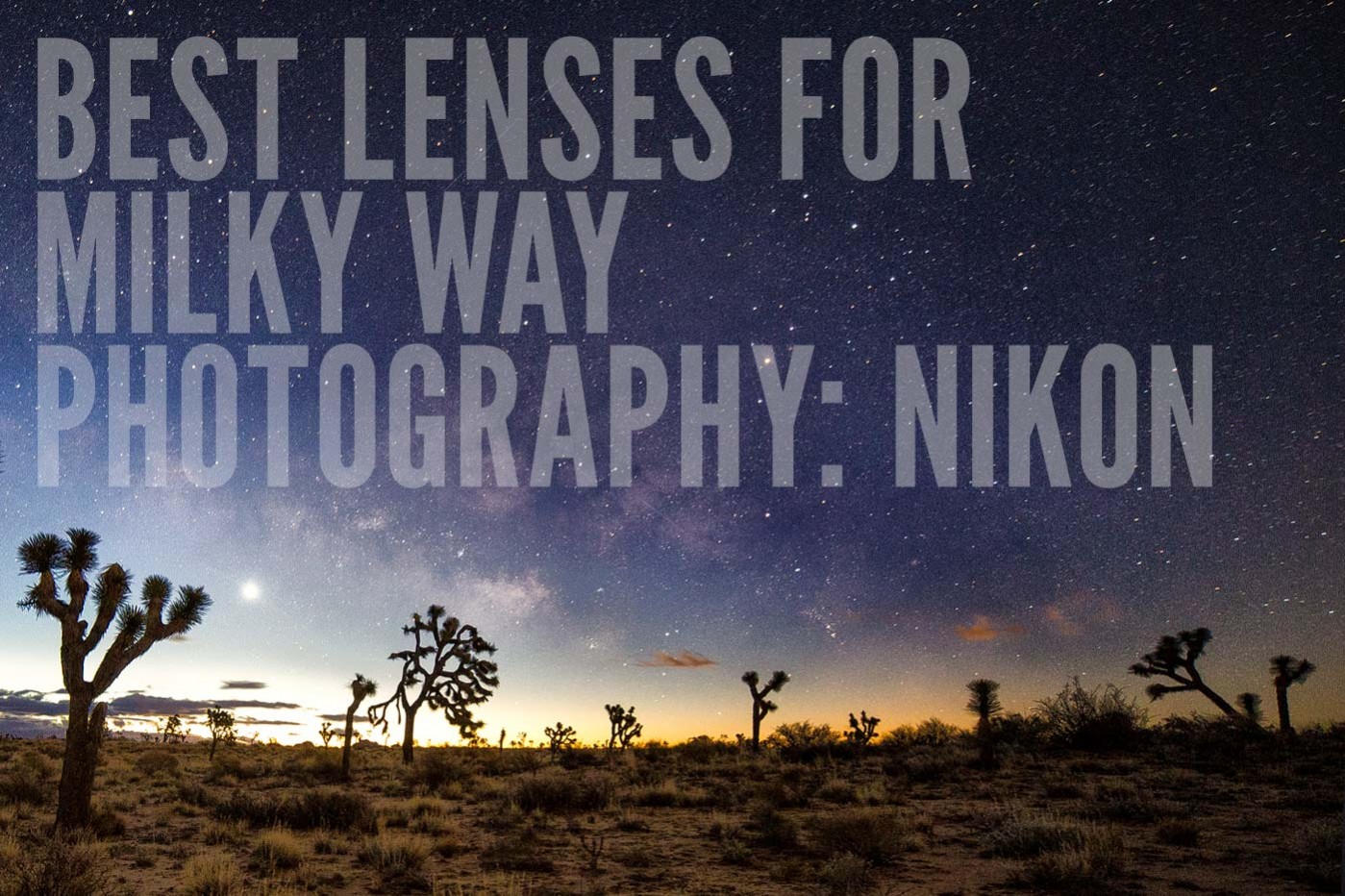If you shoot with a Nikon camera and you want to improve your astrophotography, these are the best lenses for the job.
What is the best lens for astrophotography? The one that collects the most light.
This is a list of the highest scoring lenses for untracked nightscape photography and astrophotography. The score is a direct representation of light gathering capabilities based on the formula:
Score = (aperture area) × (angular area) × (suggested shutter speed)
Where the shutter speed is the longest suggested shutter speed in seconds based on the “500 Rule” (500/focal length). Aperture area is the surface area calculation of the clear aperture of the lens and the angular area is the angular field of view in square radians. This score is a mathematical calculation based purely on some simple physics. It doesn’t account for other considerations like the lens’s build quality or optical aberrations but it’s a good gauge of overall light gathering capability. You can also see the complete list of scores here, complete with calculations and further explanation.
All of the lenses listed here are my personal suggestions for photographers looking to get the absolute best astrophotography results with their camera. If using the given camera mount, these are the lenses that I would use. Most of these lenses are manual focus lenses by Rokinon which also tend to be much more affordable than their autofocus Nikon counterparts. Additionally, most of the Rokinon lenses are sharper and tend to exhibit less coma aberration than their Nikon counterparts. The Rokinon lenses also available with Nikon’s focus confirmation and auto aperture. If you’re willing to learn how to use manual focus, Rokinon lenses are spectacular performers.
If you would like to know more about the thoughts that went into creating this list, please read my article on how to pick a lens for Milky Way photography.
FX (Full Frame and APS-C)

24mm/1.4: Rokinon 24mm f/1.4 ED AS UMC
- The best night photography and astrophotography lens you can buy. Excellently sharp, even wide open at f/1.4. Manual focus.
- Score: 2869
35mm/1.4: Rokinon 35mm f/1.4 US UMC or Sigma 35mm f/1.4 DG HSM Art
- Standard wide angle for tighter landscapes or stitching multiple exposures into larger panoramas. Rokinon is manual focus, Sigma is autofocus.
- Score: 2084
14mm/2.8: Rokinon 14mm f/2.8 IF ED UMC or Nikkor 14-24mm f/2.8G ED AF
- Essential ultra-wide angle for large sweeping landscapes. Rokinon is manual focus, Nikkor is autofocus.
- My full review of the Rokinon 14mm f/2.8
- Score: 1032
DX (APS-C Only)

16mm/2.0: Rokinon 16mm f/2.0 ED AS UMC
- The best combination of wide angle and large aperture. Manual focus.
- Score: 1875
10mm/2.8: Rokinon 10mm f/2.8 ED AS NCS
- APS-C alternative to the Rokinon 14mm/2.8. Excellent for ultra-wide angle landscapes. Manual focus.
- Score: 1184
11mm/2.8: Tokina 11-16 f/2.8 PRO DX II
- Covers the same range as the two previous lenses combined. Excellent super wide angle zoom with autofocus.
- Score: 1149 (at 11mm)
Other Systems
Best Lenses for Milky Way Photography on Canon Cameras
Best Lenses for Milky Way Photography on Fujifilm Cameras
![]()

